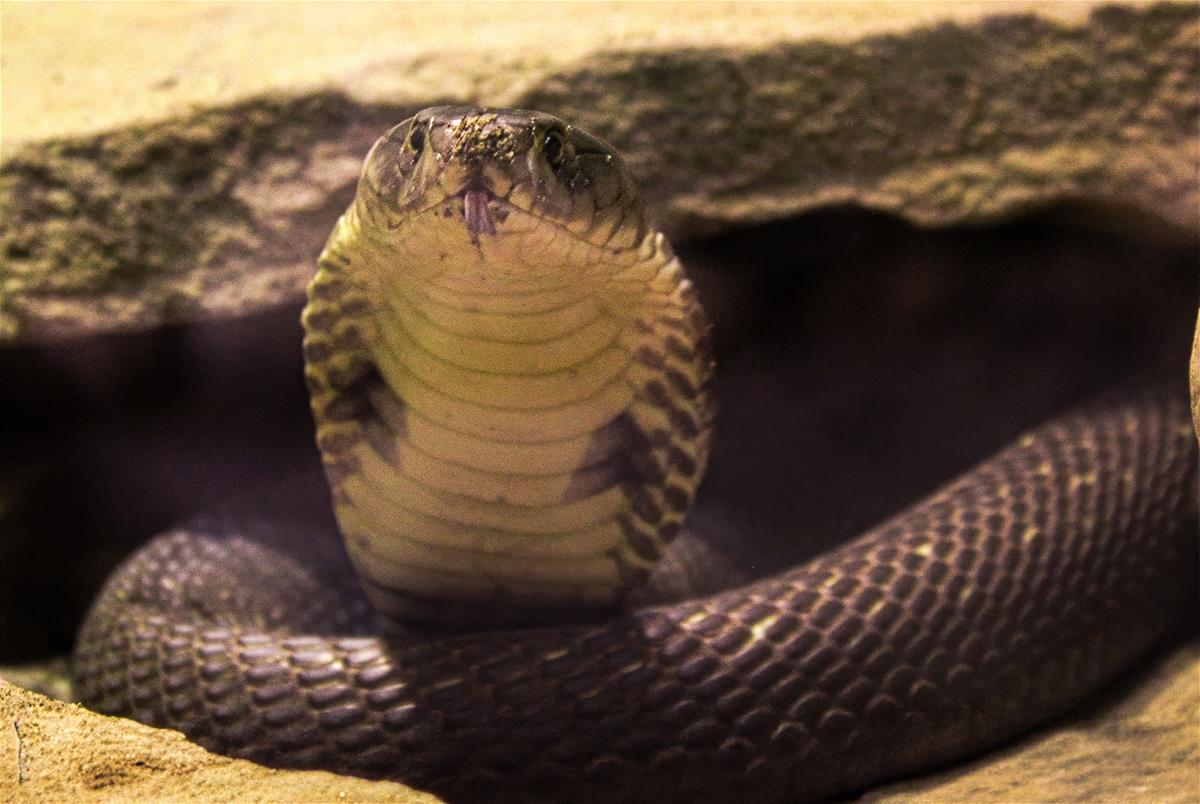Viewable


Location at the Zoo
Indo-Malaya
Global Range
Southeast Asia
Monocled Cobra
Naja kaouthia
The Monocled Cobra is a medium to large venomous snake typically measuring about 1.2 to 1.5 metres in length, with some individuals reaching up to 1.8 metres. Its most distinctive feature is the circular “monocle” pattern on the back of its hood, formed by a pale ring surrounding a dark spot. Colouration varies across its range from light tan or brown through to very dark brown or nearly black; juveniles sometimes display more obvious banding. When threatened, it lifts the front part of its body, expands its hood, and may hiss—a dramatic display that serves as a warning. This species is highly adaptable and often found in rice fields, forest clearings, and even gardens and village fringes, which means it frequently crosses paths with humans. Because of its potent neurotoxic venom and its tendency to live close to people, the Monocled Cobra plays a dual role: it offers ecological benefits (such as controlling rodent populations), but in human-dominated landscapes it also represents a significant risk and a conservation challenge.
Conservation Status: IUCN

Distribution
Found across much of South and Southeast Asia, including India, Bangladesh, Myanmar, Thailand, Laos, Cambodia, Vietnam, and southern China; introduced populations exist in Taiwan.
Habitat
Prefers open or semi-open habitats such as rice paddies, scrubland, grassland, forest edge, and human-altered landscapes. It often shelters in rodent burrows, old termite mounds, hollow logs, or abandoned human structures. This snake’s adaptability to agricultural and peri-urban habitats brings it into close proximity with people, increasing both opportunity and risk.
Diet
The Monocled Cobra’s diet consists primarily of rodents, frogs and other amphibians, smaller snakes (including venomous species), and occasionally birds or small mammals. Its venom quickly immobilizes prey, and its hood-display helps intimidate competition or predators. By consuming rodents, the species plays an important role in controlling pest populations in agricultural settings.
Reproduction
Females lay clutches of 10 to 30 eggs in warm, moist hidden locations such as compost piles, leaf litter, or burrows. Eggs incubate for around 60-70 days, depending on temperature and humidity. Hatchlings are fully venomous from birth and measure approximately 25 to 30 centimetres long. Because this cobra often lives in close proximity to humans, successful reproduction is supported by its ability to exploit disturbed habitats and human-modified environments.
Adaptation
Adaptations include an expandable hood used for both threat display and intraspecific signalling; potent neurotoxic venom adapted for rapid prey immobilization; a generalist diet allowing survival in varied ecosystems; and an ability to thrive in agricultural or human-altered landscapes. Its visual hood pattern and readiness to display serve as both learned and innate deterrents to potential predators and competitors.
Threats to Survival
The main threats are habitat loss from agricultural expansion and urbanization; human persecution due to fear or retaliation; road mortality in heavily used landscapes; and collection for the exotic pet or skin trade. Because the species thrives in human-disturbed habitats, outright extinction is unlikely in the near term—but local population decline is a real concern where human-snake conflict is high.












